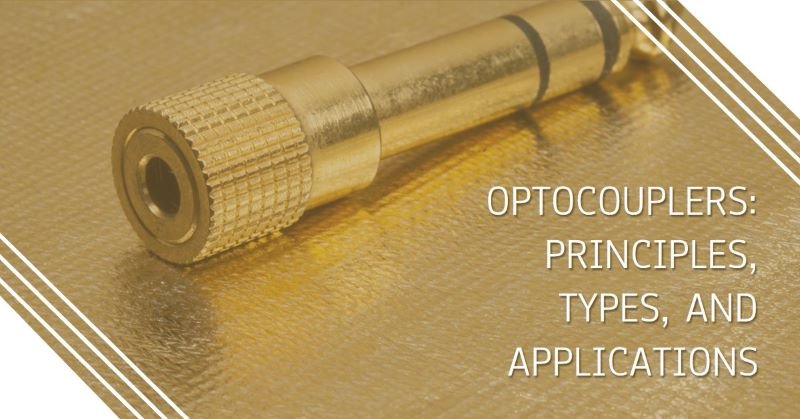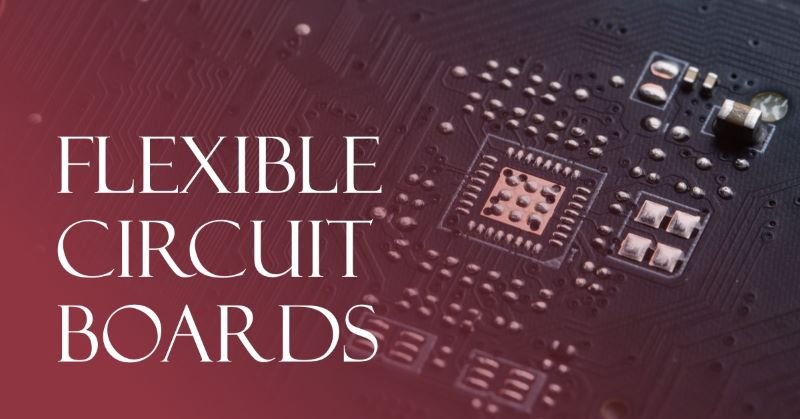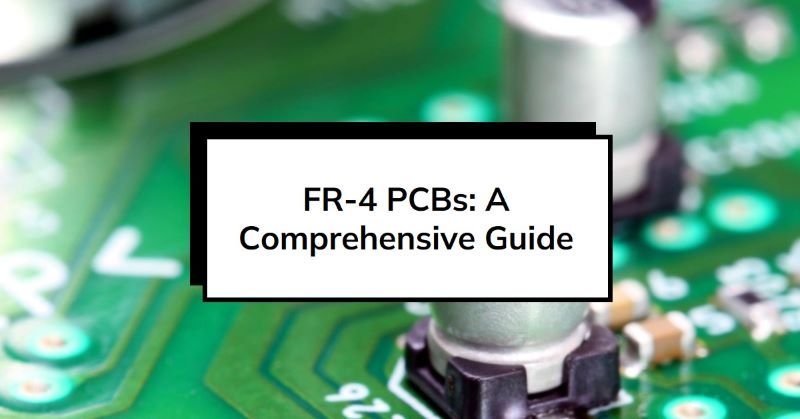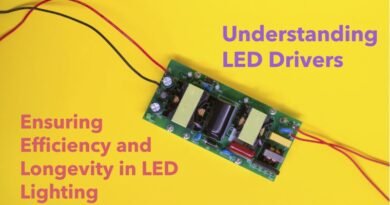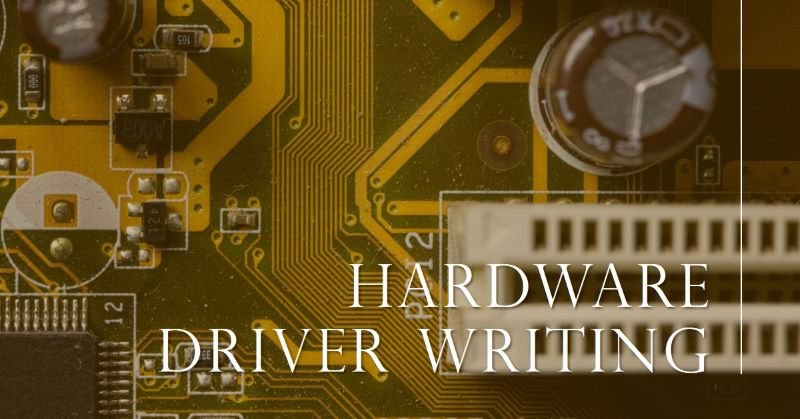Understanding Optocouplers: Principles, Types and Applications
Introduction
An optocoupler, also known as an opto-isolator, is a crucial electronic component that transfers electrical signals between two isolated circuits using light. It ensures electrical isolation, preventing high voltages and electrical noise from affecting sensitive components. This makes optocouplers indispensable in a wide range of applications, from industrial automation to consumer electronics. The goal of this article is to provide a comprehensive understanding of optocouplers. We will explore their types, working principles, and various applications. By the end of this article, you will have a thorough knowledge of how optocouplers function and why they are essential in modern electronic circuits.
What is an Optocoupler?
An optocoupler also known as an opto-isolator. It is an essential electronic component designed to transfer electrical signals between two isolated circuits through the use of light. This isolation mechanism is critical in various applications where protecting sensitive components from high voltages or noisy electrical environments is paramount. The primary function of an optocoupler is to provide electrical isolation while allowing the signal to pass through unimpeded. This function is achieved by converting the electrical signal from the input circuit into light, which is then detected by a photodetector in the output circuit. The conversion process involves an LED (Light Emitting Diode) on the input side that emits light when an electrical signal is applied. This light travels across an insulating barrier to a photodetector, such as a phototransistor or a photodiode, on the output side, which then converts the light back into an electrical signal.
The effectiveness of an optocoupler lies in its ability to separate the input and output circuits completely. This separation ensures that any electrical noise or high-voltage spikes in one part of the system do not propagate to other parts, thereby enhancing the overall reliability and safety of the electronic system. The optocoupler is particularly valuable in applications where sensitive microcontrollers or digital logic circuits must be protected from high-power devices or noisy electrical environments.
Optocoupler Symbol
The standard symbol for an optocoupler includes an arrow pointing towards a photodetector to indicate the light transfer mechanism. This symbolic representation effectively illustrates the optocoupler’s primary function—transmitting electrical signals through light, thereby providing electrical isolation between input and output.
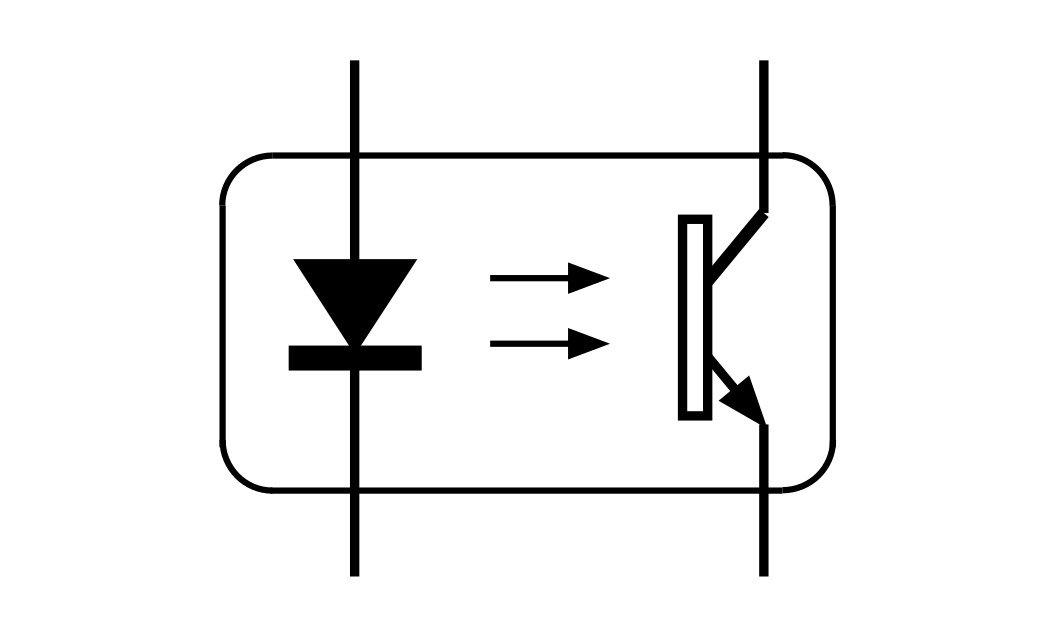
The LED within the optocoupler symbol is typically depicted by a diode symbol with arrows pointing outwards, indicating the emission of light. Adjacent to the LED symbol is the photodetector, which can vary based on the type of optocoupler.
Construction of an Optocoupler
An optocoupler is mainly composed of two essential elements: an infrared LED and a light-sensitive device that detects the infrared light emitted by the LED. The light-sensitive device can be a photodiode, phototransistor, Darlington pair, SCR, or TRIAC.
Here’s a basic diagram of an optocoupler:
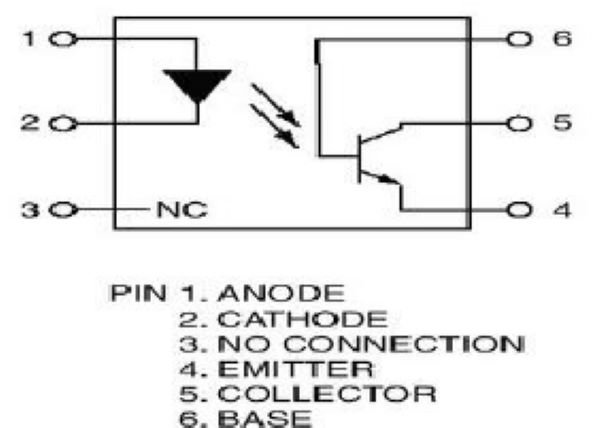
The infrared LED and the light-sensitive device are housed together in a single package. The LED is positioned on the input side, while the light-sensitive device is on the output side. A resistor is connected at the beginning of the circuit to limit the current, and another resistor is connected between the supply voltage and the collector terminal of the phototransistor. Before we proceed further, let’s look at the pin configuration of an optocoupler:
- Pin 1: Anode
- Pin 2: Cathode
- Pin 3: Ground
- Pin 4: Emitter
- Pin 5: Collector
- Pin 6: Base
The base terminal of the phototransistor is externally accessible. In a simple isolating optocoupler, a single phototransistor is used at the output stage to detect the light emitted by the LED and convert it back into an electrical signal.
Types of Optocoupler
The primary types include phototransistor optocouplers, photodarlington optocouplers, photovoltaic optocouplers, and high-speed optocouplers.
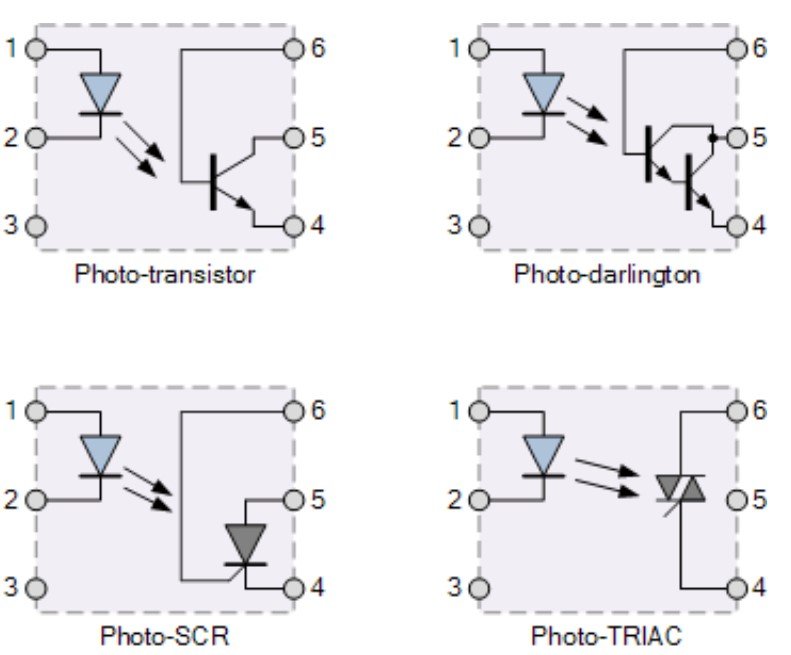
Phototransistor Optocouplers
Phototransistor optocouplers utilize a phototransistor as the light-sensitive component. These are the most common type of optocouplers, known for their reliability and ease of use. The phototransistor activates when it receives light from the LED within the optocoupler, thus allowing current to pass through. These optocouplers are widely used in applications where moderate speed and current transfer are sufficient, such as power supplies, microprocessor input/output isolation, and signal transmission.
Photodarlington Optocouplers
Photodarlington optocouplers are similar to phototransistor types but incorporate a Darlington pair of transistors to amplify the current. This configuration results in higher current gain, making photodarlington optocouplers suitable for applications requiring higher sensitivity and current handling capability. However, they tend to have slower response times compared to phototransistor optocouplers. Typical use cases include industrial control systems, motor drive circuits, and other applications where high input to output current gain is necessary.
Photovoltaic Optocouplers
Photovoltaic optocouplers generate a voltage when exposed to light, thanks to their photovoltaic cell. Unlike other types, they do not require an external power supply for the output side. These optocouplers are ideal for applications like driving MOSFETs in high-voltage circuits, providing isolated gate drive in power converters, and other scenarios where electrical isolation and direct voltage generation are beneficial.
Photo-SCR Optocouplers
Photo-SCR (Silicon Controlled Rectifier) optocouplers are designed to handle high power and are typically used in AC power control applications. They consist of an LED and a light-sensitive SCR. When the LED is activated, it triggers the SCR, allowing current to flow through the device. These optocouplers are well-suited for applications like motor control, AC power switching, and over-voltage protection. Their primary advantage is the ability to handle high voltages and currents, but they generally have slower response times compared to other types.
Photo-TRIAC Optocouplers
Photo-TRIAC optocouplers are specifically designed for AC power switching applications. They consist of an LED and a TRIAC (Triode for Alternating Current) that is activated by the light from the LED. These optocouplers are ideal for controlling AC loads such as lamps, motors, and heaters. They offer the advantage of being able to switch AC power directly, but their response times are slower, making them less suitable for high-speed applications.
Working of an Optocoupler
The internal structure of an optocoupler consists primarily of a light-emitting diode (LED) and a photodetector, which can be a photodiode, phototransistor, or other photosensitive devices. When an electrical signal is applied to the input side, it activates the LED, causing it to emit light. This light travels across a transparent gap within the optocoupler and reaches the photodetector on the output side. The photodetector then converts the received light back into an electrical signal, effectively transmitting the original input signal while maintaining electrical isolation.
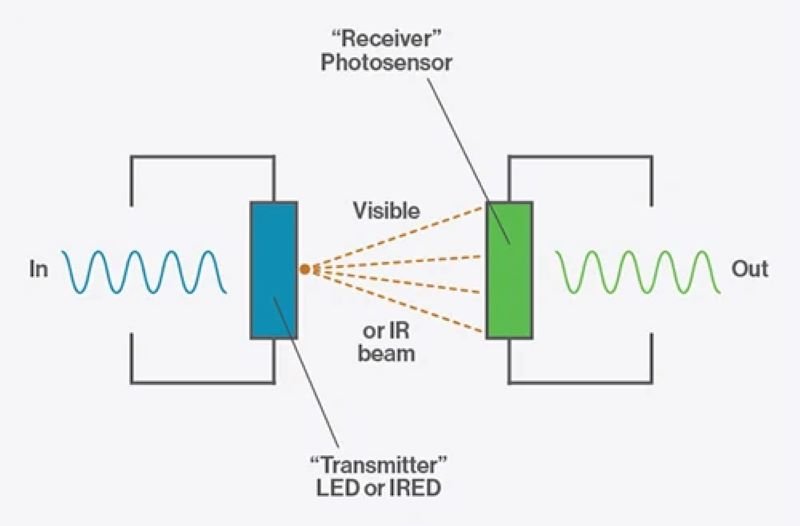
In terms of operation, the input stage is responsible for driving the LED. When a current flows through the LED, it emits photons. The output stage, which includes the photodetector, captures these photons. The interaction between the input and output stages is crucial for the faithful reproduction of the signal while ensuring that no direct electrical connection exists between them.
Different modes of operation exist for optocouplers. In the linear mode, the output signal is a linear function of the input signal, maintaining proportionality. In the switching mode, the optocoupler operates as a digital switch, turning on or off depending on the input signal’s presence. Practical applications often involve using optocouplers in power supply circuits, signal isolation in microprocessor systems, and interfacing between different logic level systems.
Applications of Optocouplers
Optocouplers, also known as optoisolators, play a crucial role in a multitude of applications across various industries. These components are essential for ensuring electrical isolation and signal integrity in systems that involve disparate voltage levels and high noise environments.
Telecommunications
In the telecommunications industry, optocouplers are employed to isolate high-voltage circuits from low-voltage control circuits. They are pivotal in ensuring that signal transmission between different voltage potentials is both safe and reliable. For instance, in telephone exchange systems and broadband communication equipment, optocouplers help in the smooth functioning of data links and signal processors by minimizing interference and enhancing signal clarity.
Industrial Automation
Industrial automation heavily relies on optocouplers for noise suppression in digital circuits and for protecting microcontrollers and other sensitive components. They are widely used in motor control circuits where electrical isolation is necessary to prevent high voltages from damaging control circuits. In power supply circuits, optocouplers ensure the safe transfer of signals while maintaining the integrity of the system. Examples include programmable logic controllers (PLCs) and variable frequency drives (VFDs), where optocouplers are integral to reliable operation.
Medical Devices
In the medical field, optocouplers are crucial for patient safety and device reliability. They are used in medical imaging equipment, patient monitoring systems, and other diagnostic devices to provide isolation between high-voltage and low-voltage components. This isolation is vital to protect both the patient and the sensitive electronic components from electrical surges and noise.
Consumer Electronics
Consumer electronics also benefit significantly from the use of optocouplers. In devices such as switching power supplies, microprocessor I/O interfaces, and battery management systems, optocouplers ensure that low voltage control circuits are protected from high voltage spikes. In smart home devices and personal gadgets, they enhance the longevity and reliability of the electronics by preventing electrical faults.
Data Communication Interfaces
Optocouplers are essential in data communication interfaces, where they facilitate the transfer of data between different parts of a system without direct electrical connection. This capability is particularly important in environments where electrical noise can interfere with data transmission, such as in networking equipment and computer peripheral interfaces.
Advantages of Optocouplers
- Electrical Isolation: Optocouplers provide excellent electrical isolation between input and output circuits, protecting sensitive components from high voltages and noise.
- Noise Reduction: They help minimize electrical noise, ensuring signal integrity in noisy environments.
- High Speed: Some optocouplers offer fast switching speeds, suitable for high-frequency applications.
- Reliability: With no mechanical parts, optocouplers are highly reliable and have a long operational lifespan.
- Versatility: They can be used in various applications, including microcontroller interfacing, power supply isolation, and signal transmission.
- Compact Size: Optocouplers are available in compact packages, saving space in electronic designs.
- Low Power Consumption: They typically consume low power, making them efficient for battery-operated devices.
Disadvantages of Optocouplers
- Limited Speed: Some optocouplers have slower response times compared to other isolation methods, making them unsuitable for very high-speed applications.
- Temperature Sensitivity: Performance can degrade at extreme temperatures, affecting reliability and consistency.
- Current Transfer Ratio (CTR) Variability: The current transfer ratio can vary with temperature, aging, and other factors, leading to inconsistent performance.
- Voltage Limitations: Optocouplers may have voltage limitations, restricting their use in high-voltage applications.
- Aging and Degradation: The LED inside an optocoupler can degrade over time, reducing the efficiency of signal transmission.
- Complex Design: Integrating optocouplers into circuits may require additional components like resistors and capacitors, complicating the design.
- Cost: High-performance optocouplers can be more expensive compared to other isolation methods.
Conclusion
In this article, we looked at what optocouplers are, how they work, and the different types like photodiode, phototransistor, Darlington pair, SCR, and TRIAC optocouplers. We explained how they provide electrical isolation, reduce noise, and protect sensitive parts. We also discussed their uses in various fields, their benefits, and their limitations.
Optocouplers are very important in modern electronics because they reliably and efficiently isolate circuits, improving safety and performance. They protect sensitive circuits from high voltages and electrical noise, making them essential in both consumer and industrial applications. As technology advances, optocouplers will continue to be crucial in the electronics industry.
FAQs
Here are some common FAQs related to optocoupler:
What is the difference between an isolator and an optocoupler?
An isolator provides electrical isolation between two circuits, often using magnetic or capacitive coupling. An optocoupler, a type of isolator, uses light to transfer electrical signals between isolated circuits, consisting of an infrared LED and a photosensitive device. Optocouplers are preferred for their ability to provide high isolation with minimal signal distortion.
What is an isolated circuit?
An isolated circuit is a circuit that is electrically separated from other circuits or ground, preventing direct current flow between them. This separation is achieved using transformers, optocouplers, or capacitors, enhancing safety and reducing interference by protecting sensitive components from high voltages and electrical noise.
What are the differences between optocouplers and solid state relays?
Optocouplers are components that use light to transfer signals between isolated circuits, providing electrical isolation. Solid state relays (SSRs) use optocouplers internally but function as switches, controlling high-power loads with low-power input signals. Optocouplers are mainly used for signal isolation, while SSRs are used for switching applications, offering faster switching speeds and longer lifespans compared to mechanical relays.
